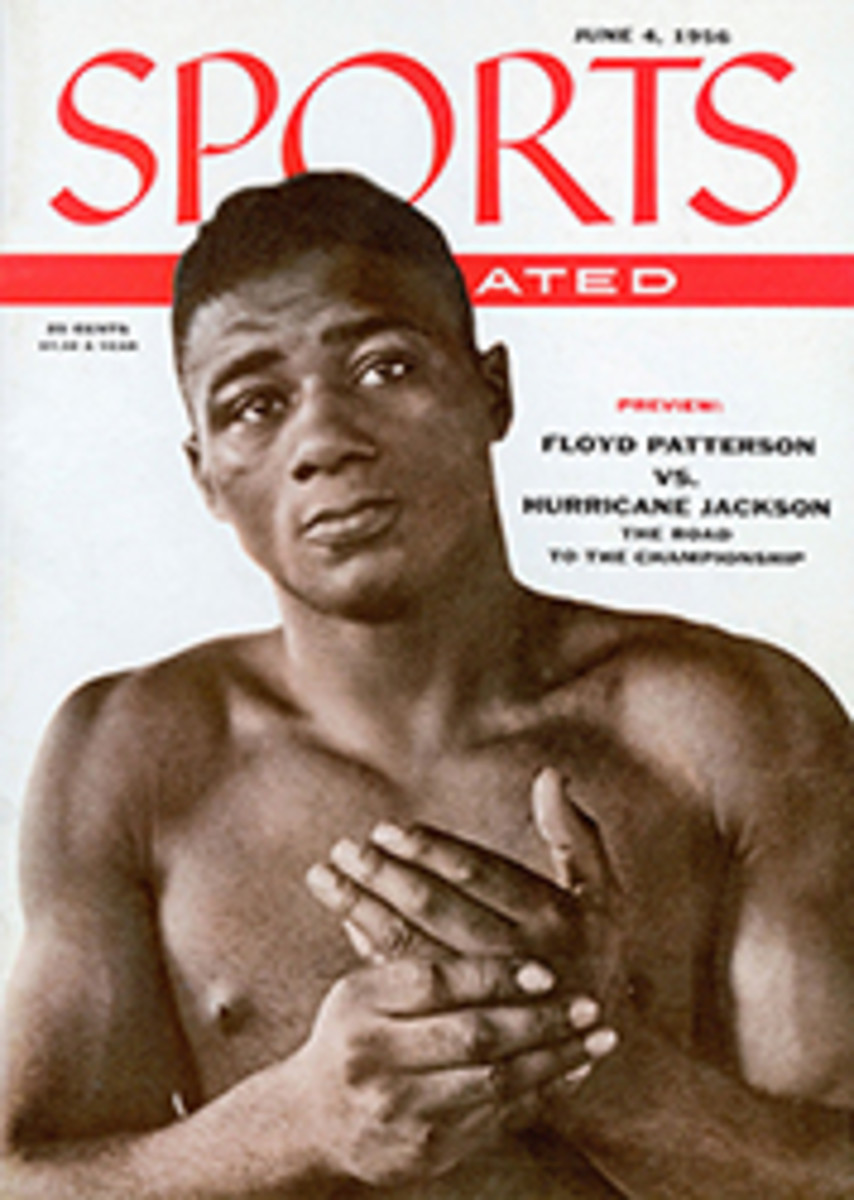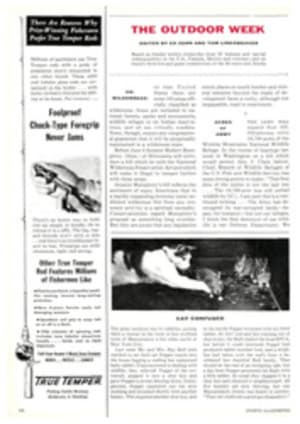
CLAIRE AND RUDI
Claire McCardell is to American women the leading prophet of the American look—the look of long, lean ease that makes them the best-dressed women on beach or field. As such, she has been a prophet heaped with honors. Last week, Miss McCardell was able to put another silver cup on the shelf of her Seventh Avenue office, where, for nearly a quarter century, she has been designing clothes for the firm of Townley Frocks.
In the plush pink and crystal surroundings of Manhattan's St. Regis Roof, she was acclaimed the leading innovator of women's sports clothes in America, winner of the first American Sportswear Designers Award, determined by voting among 200 of the nation's top retailers. Sponsored by SI in recognition of the tremendous job the new American couture has done to make women at play lovelier and more sensibly dressed than their 19th century forebears would have dreamed was possible, the award was accorded all the prestige of a Pulitzer Prize by the fashion world.
As if the acclaim was for a coast-to-coast look of classic simplicity, a junior award was also given, to the sportswear designer of greatest promise: Rudi Gernreich of California. In the five brief years during which he has designed sportswear for Walter Bass of Beverly Hills, Rudi has been hailed as a revolutionary and a genius. He, however, disclaims revolutionary ideas and says that he is "of the school of Claire McCardell."
Both Rudi and McCardell are the products of an evolution that has taken a millennium' to move women from bear skin to bare skin. A high point of women's modesty in dress was reached in Queen Victoria's day. As standard bearer of ladies' fashions in her day, Victoria was immovable, and the active female form seemed doomed to be lost forever in a sea of petticoats.
Since that time other standard bearers, no less militant, have appeared in a battle for emancipation in dress. Amelia Bloomer campaigned in voluminous bloomers that 30 years later were adapted by girls for the fashionable sport of bicycling. Annette Kellerman firmly divested herself of her sailor-collared bathing dress and set world's swimming records in a form-fitting black suit. In the '20s Gibson Girl golf dresses gave way to the comely sweater and skirt worn by Glenna Collette, and the indomitable Helen Wills made fashion history on the tennis court by wearing a short-skirted white dress that made sense for tennis.
As temperatures went down, women on ice skates stretched a point even further and, inspired by Sonja Henie in her flesh-colored tights and plumes, a whole generation took to short, ballerina skating skirts.
Legs were in fashion, the longer and barer the better, and as the '40s came on, Vogue seriously took up the question of "How much can you bare?" Midriffs fell out, backs plunged and a new era of how to fashionably show off as much skin as possible arrived.
McCARDELL MILESTONES
As a pioneer, clairvoyant Claire had the subconscious desires of American women cased to perfection. She made news—and found success—in the '30s when she modernized the dirndl skirt and gave women a "play" skirt that they soon were wearing everywhere in town. She surprised people with the sensible idea of putting pockets in skirts and dresses, and made one whole season on her first "monastic" dress, a beltless garment cut straight from shoulder to hem and bound to the midriff with a long wrap tie—a style which has appeared in some variation in every collection she has done since. In the '40s Claire was up to tricks she has never abandoned, making clothes that have withstood the test of years and look as fashionable today as then. A typical trick is the blue-jean stitching used on rough fabrics such as denim for play clothes and dresses alike. Jersey swimsuits that fit like skin were launched in 1944 with a "shocker"—legs cut high, diaper style, over the thighs, and a back cut out to the waist. She eased the look of skimpy war-time skirts by adding colored leotards to dress the legs, and skinny-armed, hooded jersey blouses echoed the skin-tight look on top. Both tricks are still used in her collections.
Claire McCardell has always looked the prototype of the "American girl" for whom she designed, and she wears only the clothes she designs. She and her husband, Irving Drought Harris, an architect, divide their time between a New York apartment and a farm in Bucks County, Pa. and take winter vacations in Europe where they enthusiastically pursue their favorite sport of skiing. Although she studied designing in Paris, Miss McCardell now avoids the French style center so as not to be influenced by other designers. She is the first to have made a couture of American sportswear—to have reversed the trend and now to have European designers adapting her sports styles.
GERNREICH GIMMICKS
Like Claire McCardell, Rudi Gernreich's struggle was to find someone to manufacture the clothes that he wanted to create. Since he was a child in Vienna, Rudi has known he would design clothes. An aunt, who operated a dress salon in Vienna, encouraged his talent and asked his advice even then. After he arrived in California at the age of 16, Rudi worked as a color consultant for a fabric house; soon he was making up clothes to show how the fabrics should be used. This was the first of several small "collections" that were never produced, but were all noted and reported by members of the fashion press and buyers.
When Rudi and Walter Bass produced their first collection for the resort season of 1951 and '52, people were ready to be startled and pleased. In the five years since, Rudi's "radical" silhouettes (see above) have become familiar. And last week, with his award, he also had a lifelong wish fulfilled: he met Claire McCardell.
HOW THEY WERE CHOSEN
Candidates for SI's first American Sportswear Design Awards were nominated by the following committee: Miss Elizabeth Fairall, chairman; Wheelock Bingham, Macy's; Miss Nan Duskin; Hector Escobosa, I. Magnin; H. D. Hodgkinson, Filene's; Stanley Marcus, Neiman-Marcus; Miss Virginia Pope; William C. Stetson, Marshall Field; Fred Smith, SPORTS ILLUSTRATED.
More than 200 sportswear buyers and merchandise managers voted by mail, with the results kept secret until the night of the award dinner.
Other candidates for the senior award for achievement were Louella Ballerino, Tom Brigance, Bonnie Cashin, Margit Felligi, DeDe Johnson, Tina Leser, Vera Maxwell, Toni Owen, Greta Plattry, Clare Potter, Rose Marie Reid, Carolyn Schnurer and Sydney Wragge.
For the creative promise award other candidates were Bill Atkinson, Donald Brooks, Jeanne Campbell, Jane Ford, Bud Kilpatrick, Phil Rosenberg, Pembroke Squires, John Weitz and Stanley Wyllins.
PHOTO
WINNERS McCARDELL AND GERNREICH POSE WITH HER CUP AFTER THE AWARD CEREMONY
ILLUSTRATION
MARU SUZUKI
1943: NEW PLACE FOR BARE SKIN
ILLUSTRATION
MARU SUZUKI
1944: SKIMPY SKIRT AND LEOTARD
ILLUSTRATION
MARU SUZUKI
1944: "DARK MENACE" BATHING SUIT
ILLUSTRATION
MARU SUZUKI
1945: KNICKERS, THE FIRST HOOD
ILLUSTRATION
MARU SUZUKI
1952: NO-SHAPE KNITTED SHEATH
ILLUSTRATION
MARU SUZUKI
1955: SHAPELY KNITTED SWIMSUIT

